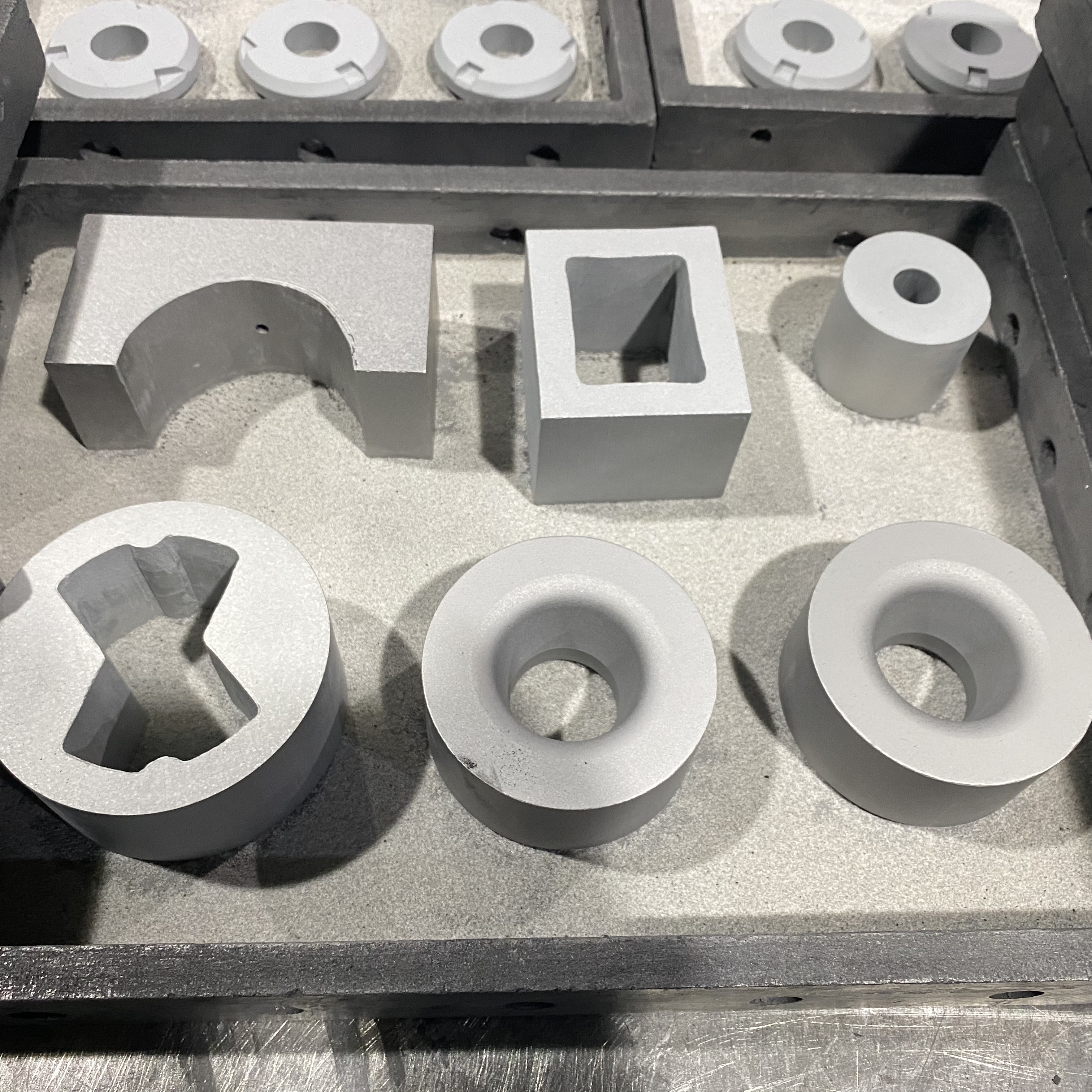The sintering of cemented carbide is liquid phase sintering, i.e. the re-bonding phase is in liquid phase. The pressed billets are heated to 1350°C-1600°C in a vacuum furnace. The linear shrinkage of the pressed billet during sintering is about 18% and the volume shrinkage is around 50%. The exact value of the shrinkage depends on the particle size of the powder and the composition of the alloy.

Sintering of cemented carbide is a complex physicochemical process, which includes plasticizer removal, degassing, solid phase sintering, liquid phase sintering, alloying, densification, dissolution precipitation and other processes. The pressed billet is sintered under specific conditions to form a product with a certain chemical composition, structure, properties and shape and size. These process conditions vary considerably depending on the sintering unit.

Cemented carbide vacuum sintering is a process in which sintering is performed at less than 1 atm (1 atm = 101325 Pa). Sintering under vacuum conditions greatly reduces the hindrance of densification by the adsorbed gas on the powder surface and the gas in the closed pores, which is conducive to the diffusion process and densification, avoids the reaction between the metal and some elements in the atmosphere during the sintering process, and can significantly improve the wettability of the liquid viscous phase and the hard phase, but vacuum sintering should pay attention to prevent the evaporation loss of cobalt. Vacuum sintering can be generally divided into four stages, i.e. plasticizer removal stage, pre-sintering stage, high temperature sintering stage and cooling stage.
The plasticizer removal stage starts from room temperature and rises to about 200°C. The gas adsorbed on the surface of the powder particles in the billet is separated from the surface of the particles under the action of heat and escapes from the billet continuously. The plasticizer in the billet is heated and escapes from the billet. Maintaining a high vacuum level is conducive to the release and escape of gases. Different types of plasticizers have different properties when subjected to heat, so the plasticizer removal process should be developed according to the specific situation.
Plasticizer removal process should be determined according to the specific circumstances of the test. The general plasticizer gasification temperature is below 550 ℃.

Pre-sintering stage refers to high temperature sintering before pre-sintering, so that the chemical oxygen in the powder particles and carbon reduction reaction to generate carbon monoxide gas leaving the press billet, if this gas can not be excluded when the liquid phase appears, will become a closed pore residue in the alloy, even if pressurized sintering, it is difficult to eliminate. On the other hand, the presence of oxidation will seriously affect the wettability of the liquid phase to the hard phase and eventually affect the densification process of the cemented carbide. Before the liquid phase appears, it should be sufficiently degassed and the highest possible vacuum should be used.
The sintering temperature and sintering time are important process parameters for the densification of the billet, the formation of a homogeneous structure and the acquisition of the required properties. The sintering temperature and sintering time depend on the alloy composition, powder size, grinding strength of the mixture and other factors, and are also governed by the overall design of the material.
Post time: Jun-08-2023









